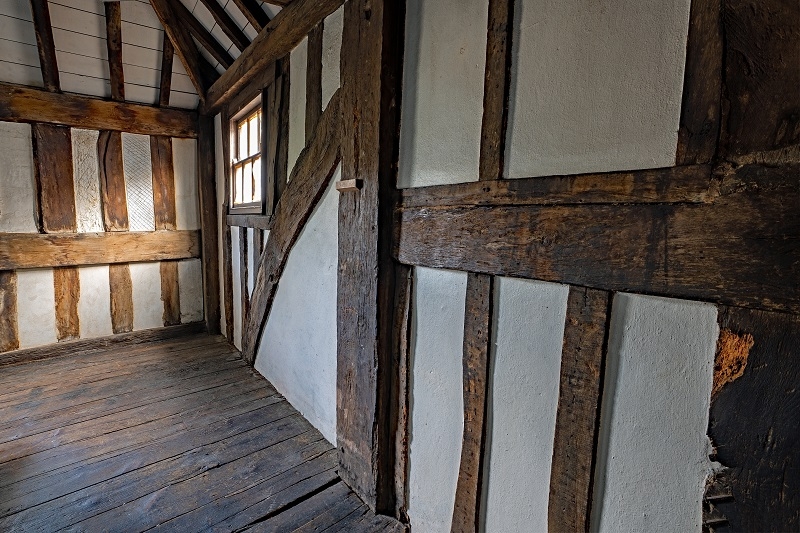Published: 30/08/23 By: Mike Bekin
Oak beams have been a constant in British architecture for many centuries. Providing structural support and a durable solution for construction projects from north to south, Oak beams – a traditional and sustainable option – are rooted in nature and history. But the oak beams seen in contemporary architecture do not always follow traditional design. Let us take a look at the differences.
Traditional Oak Beam Design
Buildings in Britain and around the world have used timber frames for thousands of years. Thought to be the oldest still standing is Jokhang Temple in Tibet, which is around 1,300 years old and still beautiful!
Nowadays you can spot a lot of older, listed buildings around the UK by their Oak beams, exposed on the exterior walls or within the home. Classic Tudor buildings, for example, are known for their exposed exterior black beams against white walls, adding plenty of character to the houses they support.
A key aesthetic of traditional Oak beams is staining the wood in darker tones. Chunky timber is quintessentially old-school British and undeniably beautiful, making it a wonderful addition to a cosy cottage, charming townhouse or sprawling family home.
Modern Oak Beam Design
Contemporary Oak beams still carry the same natural vein as traditional styles but with a few key differences. Rustic, and creating a flow between the inside and outside of your home, they are a wonderful addition to a warm, welcoming atmosphere.
Oak used in newer builds tends to be lighter toned, though this can be tailored to your preferences using stains. It is common to see thinner beams as well, allowing architects to add more to their beam design without it becoming an overwhelming feature. Modern beam construction also has access to better sawmill technologies, so the beams are straighter than in traditional builds.
Having said that, machined curved indoor beams are becoming a more common feature. Using techniques such as steam bending for Oak beams or opting for a modern, innovative technology such as Glulam, timber manufacturers can bend your wood into long or tight arches and curves for a contemporary aesthetic.
Often modern Oak beam design can afford better calculations, providing for more spacious areas, thus creating an open and light feel. Traditional beams were frequently used in smaller rooms with lower ceilings, lending to that cosy atmosphere.
Why Choose Oak for Your Beams?
Oak has been an excellent choice for beams and timber frames for both homes and larger buildings. It is durable, versatile and well-known for its rich colour and attractive wood grain. It is also a widely available timber, especially here in the UK, making it a sustainable option for your construction project.
Source Sustainable Timber with EcoChoice
At EcoChoice, we can deliver sustainable Oak from either FSC or PEFC-certified forests, processing them to suit your specifications. However, if Oak is not for you, we have plenty more species available. Get in touch to find out more and discover the perfect match for your timber beams.
Image: PJ photography / Shutterstock.com
